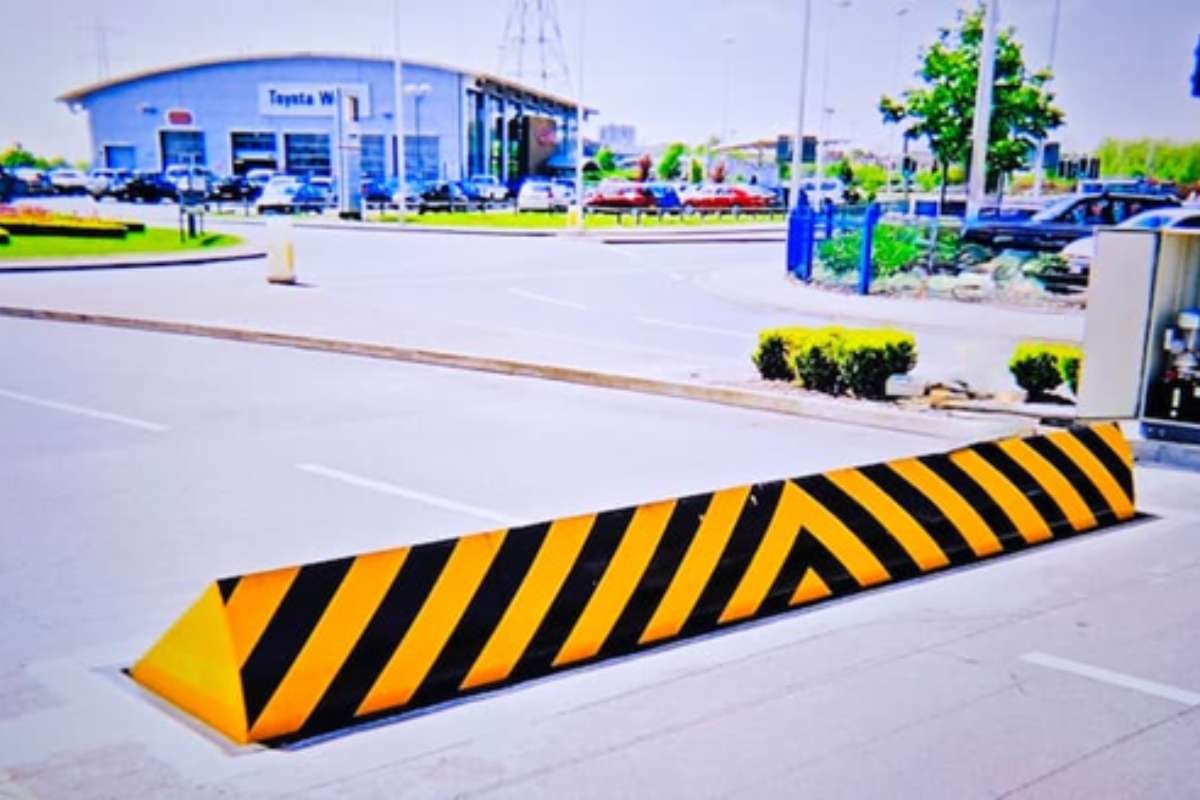In the domain of transportation, teen drivers are often perceived as inexperienced and susceptible to committing common driving mistakes. To mitigate these risks, they must adhere to basic yet effective driving strategies. In this discussion, we will explore seven key tips for teen drivers, ranging from understanding traffic rules and practicing defensive driving to the importance of regular vehicle maintenance. Each of these considerations plays a crucial role in ensuring a safer driving experience. As we unfold these concepts, one can’t help but wonder, how transformative can these strategies be for our young drivers’ safety and confidence on the road.
Here are the 7 Tips for Teen Drivers to Avoid Common Driving Mistakes:
1. Understanding Basic Traffic Rules
To guarantee safe driving practices, a thorough understanding of basic traffic rules is paramount for teen drivers. Knowledge of these rules not only guarantees safety on the roads but also contributes to a smoother and more confident driving experience.
One such rule involves traffic sign interpretation. An accurate understanding of traffic signs is key. Teen drivers should familiarize themselves with different traffic signs, their meanings, and the appropriate actions required. This includes everything from speed limit signs, and stop signs, to yield signs, and more.
Additional tips for teen drivers, understanding parking regulations is essential. Incorrect parking can lead to fines, towing, or worse, accidents. Teens should be informed about different parking zones, their restrictions, and the proper way to park in various settings, be it parallel parking on the street or angled parking in a lot.
2. Practicing Defensive Driving

Defensive driving is an essential tips for teen drivers to master, as it can greatly reduce the risk of accidents. This strategy not only involves understanding what defensive driving is but also how to effectively implement its techniques. We will discuss these aspects in detail to equip our young drivers with the necessary skills for safer road experiences.
Understanding Defensive Driving
In the domain of safe driving, one essential skill that teen drivers should master is the concept of defensive driving. This approach is about anticipation, not just reaction. It encapsulates the mindset of being prepared for potential hazards and unexpected maneuvers from other drivers, hence reducing the risk of accidents.
Road Rage is a common challenge on the roads, especially for young drivers. Defensive driving cultivates an attitude of patience and calmness, which can help teen drivers handle situations of road rage more effectively. By maintaining composure, drivers can make sound decisions without being swayed by aggressive drivers, thereby ensuring their own safety and the safety of those around them.
Hazard Perception is another critical element of defensive driving. This refers to the ability to spot potential dangers in the driving environment in advance. It could be anything from a pedestrian suddenly crossing the road to recognizing the signs of a driver acting erratically. By developing sharp hazard perception skills, teen drivers can anticipate potential threats on the road and take necessary precautions in time.
To conclude, understanding defensive driving, including managing road rage and developing hazard perception, can greatly improve safety for teen drivers, especially when they follow these tips for teen drivers.
Implementing Defensive Techniques
Understanding the concept of defensive driving is just the first step; implementing defensive techniques into daily driving practice is where the real learning begins. Defensive driving is a proactive approach that involves anticipating potential hazards and responding effectively to avoid them.
One key element of defensive driving is hazard recognition. This involves continually scanning the road and surrounding environment for potential dangers such as erratic drivers, pedestrians, cyclists, or hazardous road conditions. The sooner a potential danger is identified, the more time a driver has to react appropriately.
Another important aspect is preparation for roadside emergencies. Having a plan in place for unexpected situations, like a flat tire or mechanical failure, is a part of defensive driving. This includes having a well-stocked emergency kit in the car and knowing the basics of car maintenance. It also involves knowing how to react if involved in an accident, from ensuring everyone’s safety to reporting the incident to insurance providers.
Defensive driving techniques are not innate, they need to be learnt and practiced consistently. Implementing these methods can help teen drivers reduce the risk of accidents and drive more confidently and safely on the road.
3. Importance of Speed Limit Adherence
Adhering to speed limits is an essential aspect of safe driving, especially for who don’t know tips for teen drivers. This section will explore the importance of understanding speed limit signs and the potential consequences of over-speeding. Through this knowledge, teen drivers can reduce risks and cultivate responsible driving habits.
Understanding Speed Limit Signs
Mastering the art of reading and obeying speed limit signs is a crucial aspect of responsible driving, greatly reducing the risk of accidents and promoting road safety. This process involves two key elements: signage interpretation and speedometer accuracy.
Signage interpretation requires a keen eye and understanding of the context. Speed limit signs vary in design across different regions but generally display a number representing the maximum speed (in miles or kilometers per hour) allowed on that particular stretch of road. It’s essential for drivers, especially teens, to familiarize themselves with local speed limit signage, ensuring they adhere to the correct speeds.
Speedometer accuracy is equally important. This is the instrument in a vehicle that measures and displays the speed. A well-calibrated speedometer ensures that drivers are not unknowingly exceeding the speed limit. Regular maintenance checks can help guarantee the speedometer’s accuracy.
Adhering to speed limits isn’t just about obeying the law. It’s about preserving the safety of the driver, passengers, and fellow road users. Understanding speed limit signs, as such, plays a crucial role in preventing accidents and maintaining harmony on the roads. By mastering this skill, teen drivers can contribute to a safer driving environment for everyone.
Consequences of Over-speeding
In addition to obeying speed limits greatly reducing the risk of road accidents, ignoring them and resorting to over-speeding can lead to dire consequences. Over-speeding not only increases the likelihood of accidents but also makes them more severe when they occur. The higher the speed, the less time a driver has to react to unexpected situations, leading to risky maneuvers that can endanger everyone on the road.
Speeding penalties are one of the immediate consequences of over-speeding. These can range from fines and points on your driving record to license suspension and even jail time for repeat offenders. Furthermore, over-speeding can also lead to higher insurance rates, making driving more expensive for you in the long run.
Furthermore, over-speeding can damage your vehicle, causing excessive wear and tear on the engine, tires, and brakes. This not only leads to costly repairs but also shortens the lifespan of your vehicle.
4. Proper Use of Vehicle Indicators

Understanding the correct and timely usage of vehicle indicators is an essential aspect of safe and responsible driving, reducing the risk of collisions by clearly communicating your intended actions to other road users. It is paramount that teen drivers familiarize themselves with the standard indicator etiquette and be aware of potential indicator malfunctions.
Indicators should be used to signal your intentions well in advance before turning or changing lanes. This provides other drivers with ample time to adjust their speed or direction accordingly. However, it is equally vital to turn off your indicators once the action has been completed to avoid confusion.
Indicator malfunctions pose a significant risk on the road. It’s important to regularly check your indicators to make sure they are functioning correctly. Flickering or non-responsive indicators could indicate a bulb issue or electrical fault. Regular maintenance checks can help identify these problems early on and avoid dangerous situations.
Indicator etiquette is not just about using them but also about using them correctly. Misuse, such as indicating too late or not at all, can be as hazardous as not using indicators. Therefore, understanding and practicing good indicator etiquette is an indispensable tips for teen drivers.
5. Dangers of Distracted Driving
One of the most prevalent risks for teen drivers is the danger posed by distracted driving, a menace that demands immediate attention and understanding. This form of reckless behavior is largely fueled by mobile addiction and peer pressure, two major issues in today’s teen society. For additional insights, check out these 7 tips for teen drivers to help mitigate such risks.
Mobile addiction, a growing concern for parents and law enforcement alike, is a significant catalyst for distracted driving. The compulsion to answer calls, reply to texts, or check social media while driving, can lead to a loss of focus on the road and the traffic around. This loss of attention, even if momentary, can result in severe accidents, sometimes fatal.
Peer pressure, another influential factor, can also contribute to distracted driving. The desire to impress friends or appear ‘cool’ might lead teens to engage in risky behavior, such as taking selfies while driving or showing off their driving skills without focusing on the road.
Therefore, teen drivers need to understand these dangers and develop self-discipline. This involves resisting the urge to use mobile devices while driving and standing up to peer pressure. Through education and enforcement, we can help mitigate the risks associated with distracted driving.
6. Implications of Driving Under the Influence

The grave repercussions of driving under the influence, often abbreviated as DUI, present another significant threat to the safety of teen drivers. The risks extend beyond immediate physical harm; they also encompass potential legal consequences, future employability issues, and long-term health problems resulting from substance abuse.
Peer pressure prevention is an essential factor in mitigating the risk of DUI among teenagers. Teens should be encouraged to assertively resist societal pressures encouraging unhealthy behaviors. They must understand that it’s acceptable to say ‘no’ when friends suggest driving after consuming alcohol or drugs.
Substance abuse education provides another avenue to prevent DUIs. An in-depth understanding of the effects of alcohol and drugs on the body, particularly their impact on cognitive functions and reaction times, can dissuade teens from making dangerous choices. Knowledge about the psychological dependence that can develop due to substance abuse may also act as a deterrent.
7. Emphasizing Regular Vehicle Maintenance
Regular vehicle maintenance, often overlooked by teen drivers, plays a pivotal role in guaranteeing both the longevity of the car and the safety of its occupants. Many common driving mishaps can be avoided by taking steps to make certain your vehicle is in peak condition. Regular check-ups and preventative maintenance can save drivers from unnecessary breakdowns and accidents.
Tire care is one key aspect of vehicle maintenance. Teens should regularly inspect their tires for wear and tear, make sure they are properly inflated, and have them rotated routinely. Poor tire maintenance can lead to blowouts and loss of control on the road, which are leading causes of teen accidents.
Oil checks are another essential part of vehicle upkeep. The oil in a car lubricates the engine and absorbs heat, allowing the engine’s components to work smoothly without overheating. Ignoring regular oil changes can lead to engine damage or even engine failure. These 7 tips for teen drivers are not only important for teens it’s important for all of us.
Frequently Asked Questions
1. What Are the Best Strategies for Handling Road Rage?
Effective strategies for handling road rage include employing anger management techniques, such as deep breathing and counting to ten. Additionally, stress-reducing exercises like listening to calming music can help maintain a composed demeanor on the road.
2. How Can I Improve My Night Driving Skills?
Improving night driving skills involves mastering two key areas: dimming headlights when meeting oncoming traffic, and enhancing nighttime navigation by staying aware of road markings, and signs, and using GPS technology effectively. Practice these regularly for the best results.
3. What Are Some Tips for Maintaining Fuel Efficiency?
Implementing eco-driving techniques, such as maintaining a steady speed and avoiding rapid acceleration, can enhance fuel efficiency. In addition, regularly checking and adjusting tire pressure can have a considerable impact on fuel consumption, leading to substantial savings. If you want additional tips for teen drivers then read our article.
4. How to Deal With an Unexpected Car Breakdown?
To address an unexpected car breakdown, guarantee emergency preparedness by carrying breakdown essentials like a spare tire, tools, flashlights, and blankets. Also, learned basic car repair skills to handle minor issues on the road.
5. Are There Specific Rules for Teen Drivers Regarding Passengers?
Yes, specific rules for teen drivers regarding passengers often exist to limit peer influence. Many states use Graduated Licensing systems, which often restrict the number of passengers a new driver can carry for safety reasons. And there are important tips for teen drivers so read and save in your mind this whenever you are going to learn driving.


















